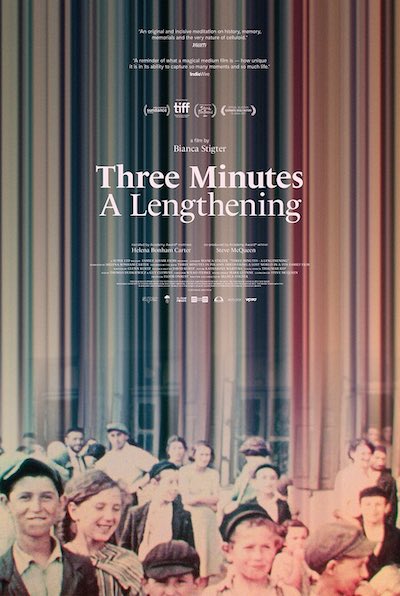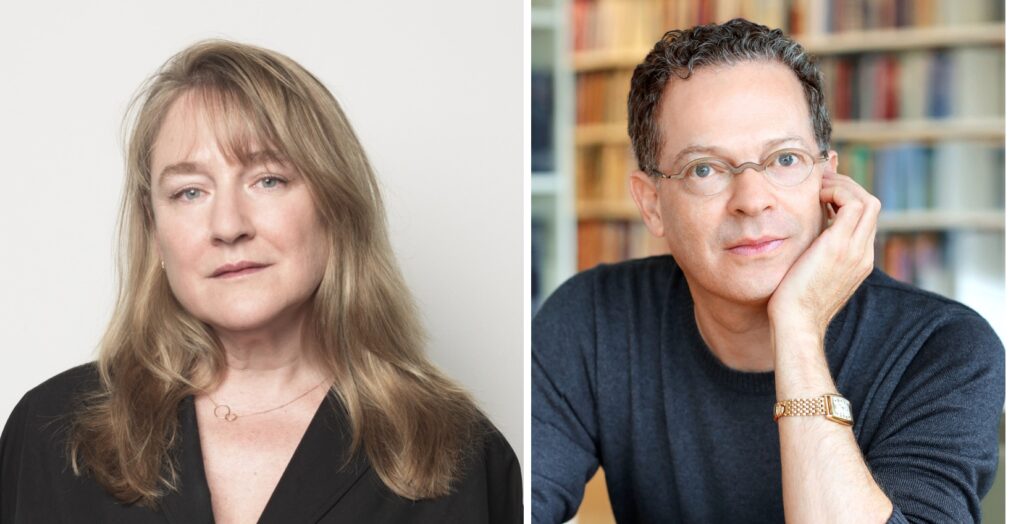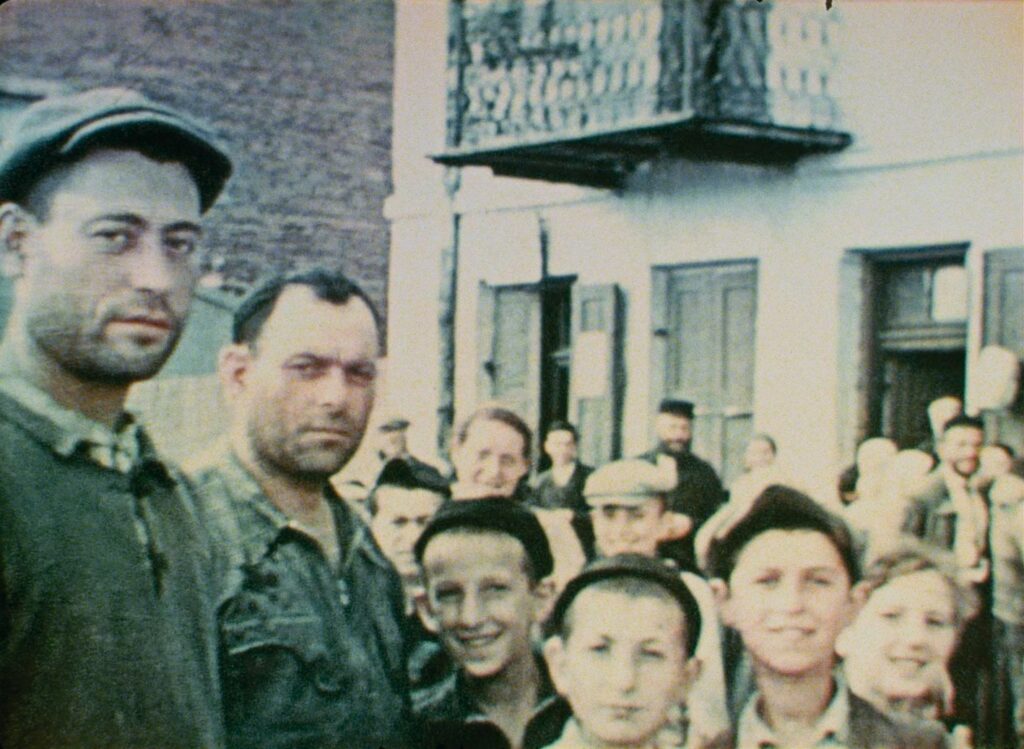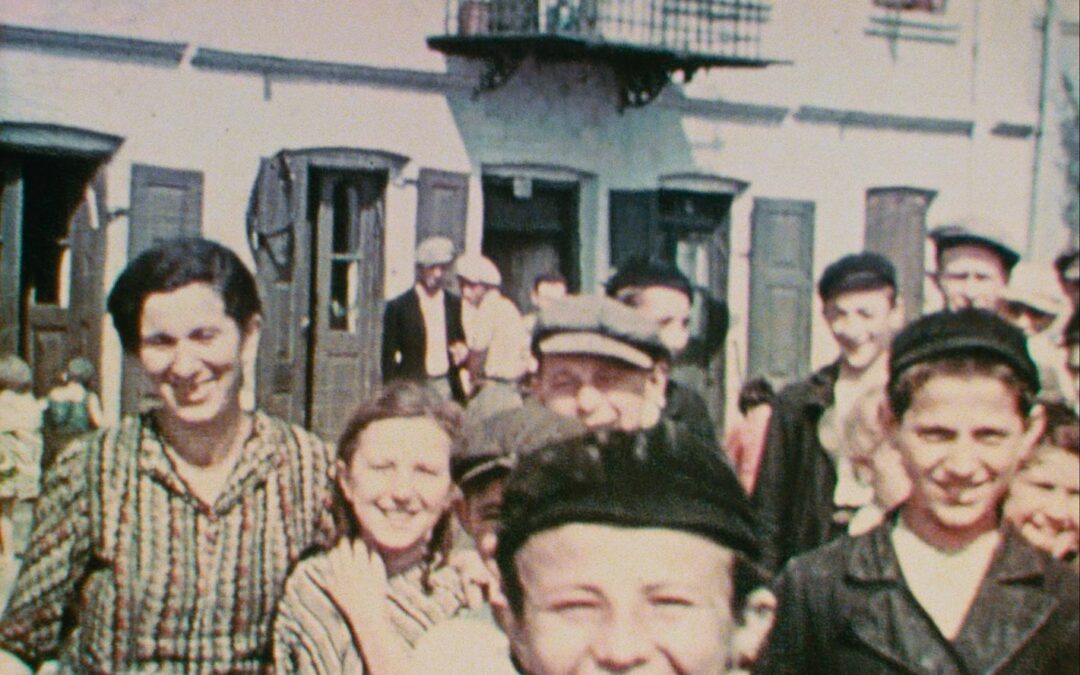
As a child, David Kurtz emigrated from Poland to the United States. Years, later, in November 1938, he returned to Europe for a sightseeing trip and visited his home town of Nasielsk. He bought a 16mm camera for the trip, then still a novelty and something that was rarely seen in this small Polish town so it caused quite a stir among the residents. More than 80 years later, three minutes of home movie footage, most of it in color, are the only known moving images left of the Jewish inhabitants of Nasielsk before the vast majority of them were murdered in the Holocaust. In this remarkable documentary, directed by Bianca Stigter, those precious three minutes are examined in intricate detail to unravel the human stories hidden in the celluloid. Tracing the story of the three minutes begins with the journey of Glenn Kurtz to discover more about his grandfather’s film, ultimately leading to the identification of people and places that have been otherwise erased from history, and even helping to connect one Holocaust survivor with his lost childhood. Three Minutes: A Lengthening, was co-produced by Steve McQueen (12 Years a Slave) and narrated by Helena Bonham Carter. Stigter examines the footage in the fullest detail, treating it as archaeological artifact that helps us gain entrance to the past. I talked to Bianca Stigter and Glenn Kurtz about this powerful and unusual documentary.
Danny Miller: I’ve always been fascinated by the tiny bit of footage that exists of the Jews of Europe before the Holocaust. Bianca, did you always plan to just use this footage in the film or was there a point where you considered having talking heads or other modern-day scenes?

Bianca Stigter: From the beginning, I was interested in ways that I could make that brief footage longer than three minutes. As a historian and journalist, I understood the desire to see certain people speaking in the film, like the survivor of Nasielsk, Mr. Chandler. You want to know what he looks like now which is why at the end of the film we did those little portraits of everyone who is interviewed, but I felt it was more powerful for the film to stick to the footage that we had from 1938 and explore it in many different ways.
I love that decision, although I did appreciate seeing those faces at the end of the film! Glenn, was this trip to Europe that your grandparents took in 1938 part of your family lore, something you knew about when you were growing up, or was finding those three minutes of film a shocking discovery for you?
Glenn Kurtz: We knew that they had taken a trip to Europe before the war, but it didn’t seem like anything that special to my parents or to me when I was a kid. But the moment I saw it for the first time as an adult, I was stunned, and I immediately knew that this was something of great historic value. And I immediately wanted to know what I was looking at and what the story was and who these people were as individuals. The question “What are we looking at?” kind of burned itself into me. And I just kept asking that over and over.
Before you saw the footage, did you know that Poland was part of their European trip?
Yes. Both of my grandparents were born in Poland and we knew that they had gone back to visit. But still — it’s hard to describe that you can know something and yet not connect it to what you know about other things. There was a kind of inherited trauma in my family. I never got to meet my grandfather, but the few occasions I can recall where we asked my grandmother about that time period, about what happened to her family in Europe, she would shut it down right away. She’d say, “They’re all gone,” and that was it. It wasn’t something that you could then ask more about, it closed off the issue in our family. And the issue remained closed until I watched this film as an adult and it broke wide open.
What’s so amazing is that this trip happened in November 1938. This is truly on the eve of the total destruction of the Jews of Europe and yet what moved me so much as I kept watching that footage is how normal it seemed, how happy and joyous so many of the faces were. I guess part of me thought that by then everyone would be living in utter terror, but I guess that’s only when we look at it through the 20/20 lens of history. It was the normalcy of the footage that brought tears to my eyes and thinking about what would soon happen to these people.

Bianca Stigter: Yes, I understand.
You just want to pull them out of the frame and into safety. I found that I was fixating on maybe five or six people as I watched the footage and kept looking to see where they were. There’s the girl with braids who keeps popping up, a woman who seems to be yelling at someone, a boy who seems pretty religious, a very elegant woman who walks across the frame, and so on. You two have seen this footage countless times, did that kind of thing happen to you as well where you focus on specific people?
Oh, yes, absolutely. There’s this girl with short hair that’s visible in a few scenes that you really start to look out for, and other people that I always follow. That’s the power of this footage that it allows you to do that, to get acquainted with these people — a boy that makes funny face, a girl that tries to stay in the frame by walking in the direction of the camera, a man who looks a bit skeptical about this novelty of a camera. You really get a sense of this group in just a few minutes. Some of them seem to be looking right at you through the lens, and then for us to know what’s going to happen a year later you just want to shout at the screen. That knowledge adds enormous tension to these vibrant, happy images.
I know, especially the children. I wanted to protect them so badly.
Yes. There’s something about following those people in this footage, as you said, and then if they appear again, even if it’s in the background or just for an instant, it kind of proves their existence again in a really human way.
Right. And for me, I know that my parents would have been those little kids in 1938 and it’s just the luck of the draw that their grandparents emigrated to the U.S. years earlier. It’s hard not to think of all the descendants these people would now have if they had survived, it’s like a whole world that was wiped out. Is there a hope you have that the release of this film might help children and grandchildren of survivors recognize other people who appear in the footage?
That’s the big hope, of course. It could still happen — perhaps a bit unlikely at this point, but not impossible.
Glenn Kurtz: Yes, originally, when I had posted the original three minutes online, I had been searching for years to try and understand what I was looking at in this footage. And then one day, out of the blue, I got an email from this woman I’d never heard of. She wrote that she had seen the footage on the website of the United States Holocaust Memorial Museum and immediately recognized her grandfather as a 13-year-old boy. She was so grateful, it meant so much to her family. I was shocked and delighted, and immediately reached out and talked to her grandfather just minutes after he had seen the footage for the first time. One of the first things he said to me was, “You’ve given me back my childhood!”
Oh wow, so moving.
He had lost his entire family his home, his town. He lost the whole culture that made sense of his life. And here it was in front of him, in the period just before anything really bad had happened. It gives me chills just thinking about it. I still feel emotional when I talk about it and I’ve told that story so many times. There are still hundreds of people in the film who we have never been able to identify. Maybe someone else can have that experience. Maybe I’m in possession of something that can give back to people who lost everything, some tiny fragment of their own lives.
Three Minutes: A Lengthening is currently playing in theaters and will be available on streaming services next month.

